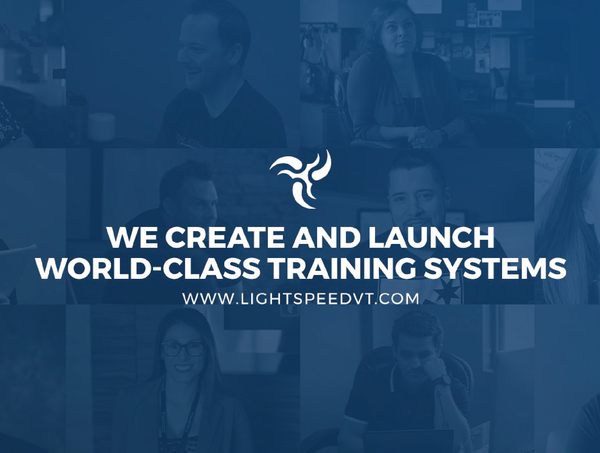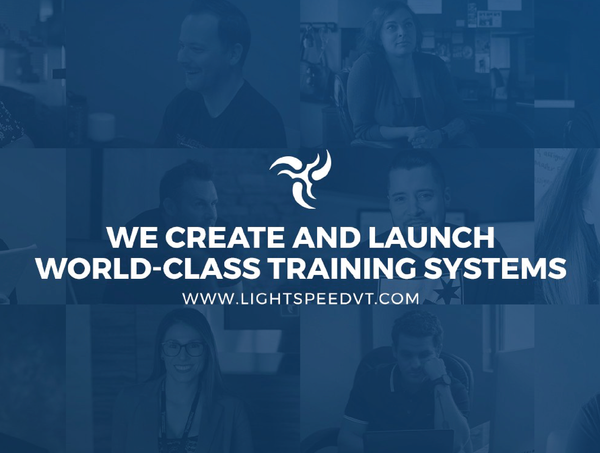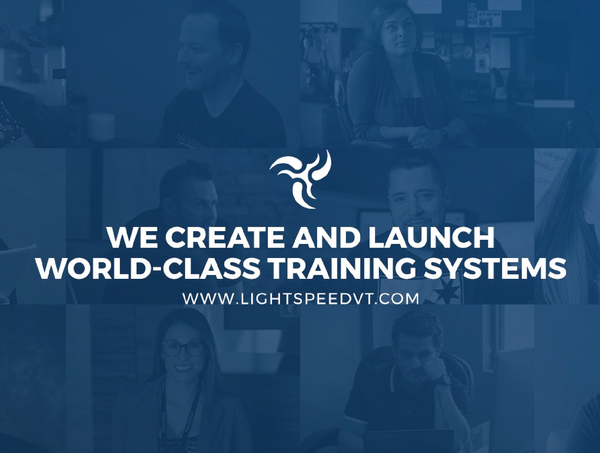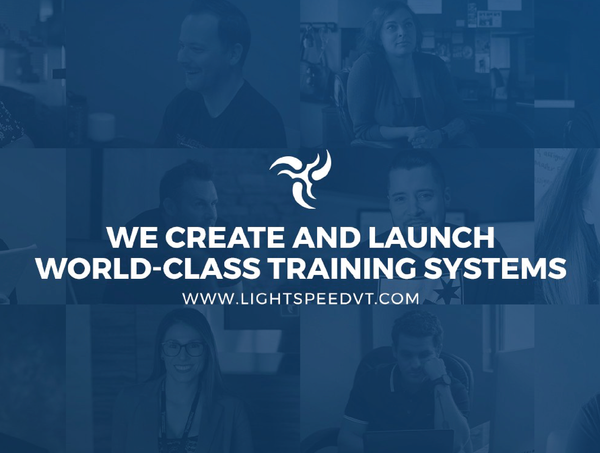Learning Management System LMS Fundamentals: LightSpeed VT
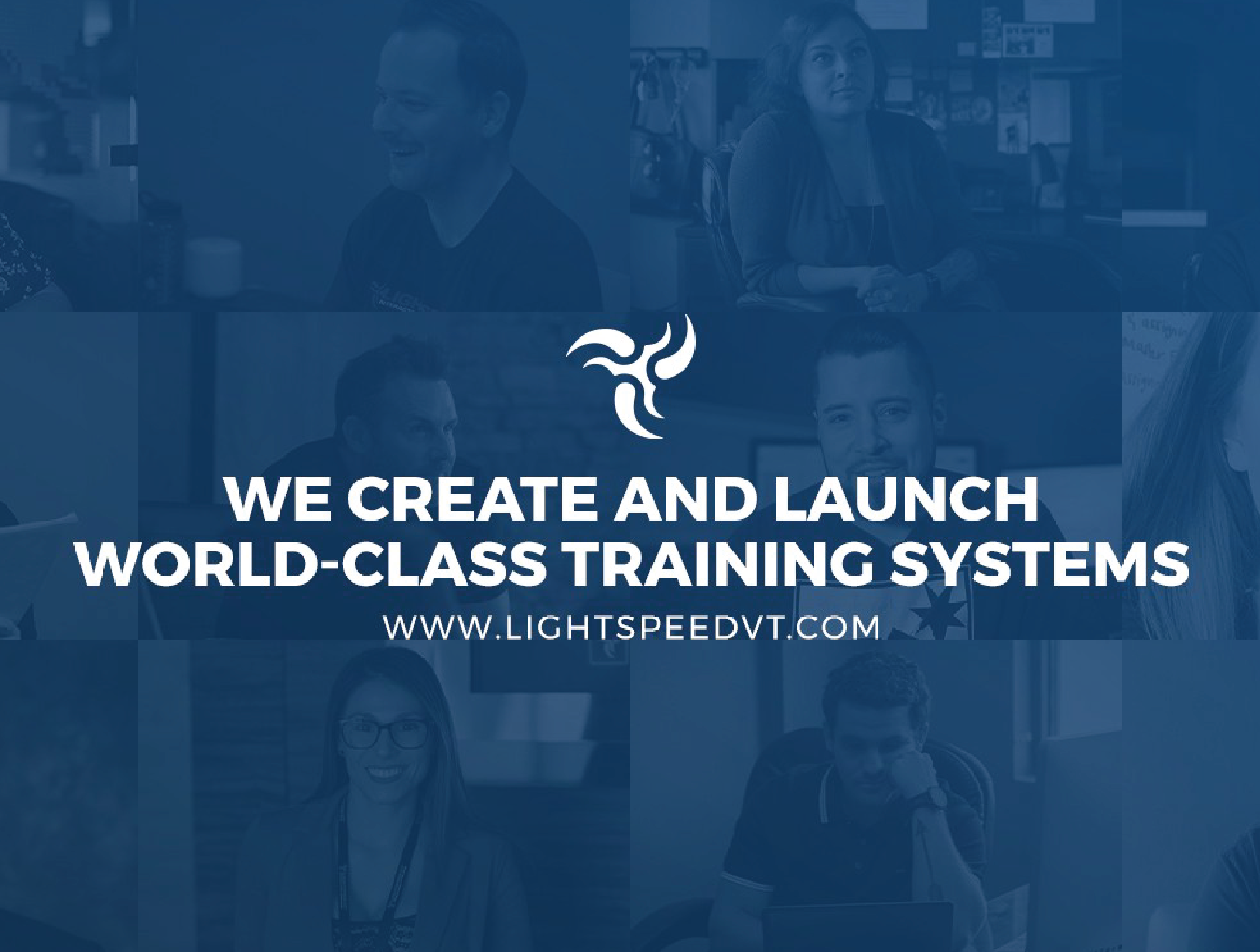
In the digital age, Learning Management Systems (LMS) have become an essential tool for delivering and managing educational content. Among these systems, LightSpeed VT stands out as a robust platform designed to enhance online learning experiences. In this article, 'Learning Management System LMS Fundamentals: LightSpeed VT,' we will delve into the core aspects of LMS, with a special focus on the distinctive features and benefits of LightSpeed VT. We will explore how organizations can effectively implement this system to maximize learner engagement and track educational outcomes, while also looking ahead to future trends in LMS technology.
Key Takeaways
- Learning Management Systems are pivotal in the modern educational landscape, with LightSpeed VT being a prominent example of innovation and effectiveness.
- LightSpeed VT distinguishes itself with unique features such as advanced customization, scalability, and interactive tools that cater to diverse learning needs.
- Successful implementation of LightSpeed VT requires careful planning, preparation, and ongoing support to ensure a seamless integration into an organization's learning environment.
- Engagement and retention are significantly enhanced in LightSpeed VT through the use of gamification, personalized learning paths, and comprehensive analytics.
- The future of LMS is shaped by emerging technologies like adaptive learning and artificial intelligence, which promise to further personalize and streamline the learning experience.
Understanding Learning Management Systems
Definition and Purpose of LMS
A Learning Management System (LMS) is a software application or web-based technology used to plan, implement, and assess a specific learning process. It provides an infrastructure for delivering and managing instructional content, tracking learner engagement, and assessing student performance. An LMS allows educators and trainers to create, distribute, and manage educational content, and provides tools for students to engage with the material and with each other.
The primary purpose of an LMS is to enhance the learning experience by making it more accessible, efficient, and scalable. It serves various stakeholders, including students, educators, and institutions, by offering a centralized platform for course materials, assignments, and communication.
The effectiveness of an LMS is often reflected in its ability to streamline the learning process and provide measurable outcomes for both learners and educators.
Below are some of the key reasons organizations implement an LMS:
- To centralize and standardize training
- To track learner progress and performance
- To deliver consistent educational experiences
- To reduce costs associated with traditional learning methods
- To enable remote learning and flexibility
Evolution of Online Learning Platforms
The journey of online learning platforms has been transformative, evolving from simple correspondence courses to sophisticated, interactive e-learning environments. The mid-20th century marked the inception of technology-enhanced education, with early pioneers exploring the potential of electronic devices to augment learning. This era saw the introduction of teaching machines and computer-assisted instruction, setting the stage for future developments.
As technology advanced, so did the capabilities of online learning platforms. The 1990s brought the internet to the forefront, revolutionizing access to information and enabling the creation of the first online courses. The table below outlines key milestones in the evolution of online learning platforms:
Today, online learning platforms are integral to education and professional development, offering unprecedented flexibility and personalization. They have become more user-friendly, interactive, and capable of supporting a diverse range of learning styles and objectives.
Key Features of Effective LMS
An effective Learning Management System (LMS) is the cornerstone of a productive online learning environment. User-friendly interfaces and intuitive navigation are essential for ensuring that learners can focus on the content rather than the technology. Accessibility across devices and platforms guarantees that learning can take place anytime, anywhere.
- E-learning authoring tools allow for the creation of engaging and interactive content.
- Professional courses and templates provide a structured learning pathway.
- Social learning tools facilitate collaboration and communication among users.
- Quizzes and surveys are instrumental in assessing learner progress and gathering feedback.
The integration of analytics and reporting is crucial for tracking learner performance and optimizing the learning experience.
Scalability is a key feature, allowing the LMS to grow with the organization. Security measures must be robust to protect sensitive data, and support for various multimedia formats is necessary to cater to different learning styles.
Exploring LightSpeed VT: An Overview
What Sets LightSpeed VT Apart
LightSpeed VT stands out in the crowded market of Learning Management Systems due to its unique approach to user engagement and retention. Its immersive learning environment is designed to keep users motivated and involved throughout their learning journey. With features such as customizable avatars, leaderboards, points, badges, challenges, and quests, LightSpeed VT goes beyond traditional learning methods.
The platform's emphasis on interactivity is not just about keeping learners entertained; it's about creating a deeper connection with the material. This is achieved through a combination of:
- Engaging multimedia content
- Real-time feedback mechanisms
- Social learning opportunities
By fostering a competitive yet collaborative atmosphere, LightSpeed VT encourages users to take an active role in their education, making learning a dynamic and social experience.
Another aspect that differentiates LightSpeed VT is its commitment to providing a personalized learning experience. Each user's journey can be tailored to their individual needs, allowing for a more effective and satisfying learning process.
Core Functionalities of LightSpeed VT
LightSpeed VT stands out with its robust set of core functionalities designed to enhance the learning experience. Central to its capabilities is the intuitive user interface, which simplifies navigation and allows learners and administrators to focus on the content rather than the technology.
Key functionalities include:
- Comprehensive course tracking
- Real-time reporting and analytics
- Interactive video training modules
- Customizable content delivery
- Integrated social learning tools
LightSpeed VT's real-time analytics empower organizations to track learner progress and identify areas for improvement, ensuring that the training is effective and meets the desired outcomes.
The platform's emphasis on interactivity and user engagement is evident through its interactive video training modules, which are designed to keep learners engaged and facilitate better knowledge retention.
Customization and Scalability
LightSpeed VT stands out in the realm of Learning Management Systems due to its highly customizable nature and scalable infrastructure. Organizations can tailor the platform to fit their unique needs, from branding and aesthetics to the functionality of the training modules.
- Private labeling allows for a seamless integration with the company's brand identity.
- Courseware management is flexible, enabling the creation and modification of content with ease.
- A variety of integrations with other software systems streamline workflows and enhance user experience.
The platform's scalability ensures that as your organization grows, LightSpeed VT can effortlessly expand to accommodate an increasing number of users and more complex training requirements. This adaptability makes it an ideal solution for businesses of all sizes, from small startups to large enterprises.
LightSpeed VT's architecture is designed to support the dynamic nature of modern organizations, ensuring that training and development can keep pace with organizational changes and industry advancements.
Implementing LightSpeed VT in Your Organization
Preparation and Planning for LMS Integration
Integrating a Learning Management System (LMS) like LightSpeed VT into your organization requires careful planning and a strategic approach. The first step is to assess your organization's training needs and ensure that LightSpeed VT aligns with your educational goals and objectives.
- Identify key stakeholders and involve them in the planning process.
- Determine the technical requirements and ensure compatibility with existing systems.
- Establish a realistic timeline for deployment and adoption.
- Develop a communication plan to inform and engage users.
It is crucial to have a dedicated team in place to manage the integration process and address any challenges that may arise.
Once the groundwork is laid, the next phase involves configuring LightSpeed VT to meet your specific needs, which includes setting up courses, user permissions, and tracking capabilities. Remember to take advantage of the world-class support offered by LightSpeed VT to streamline the integration process.
Training and Support for Users
Once LightSpeed VT is integrated into your organization, the focus shifts to ensuring that users can effectively navigate and utilize the platform. A comprehensive training program is essential for both administrators and learners to get the most out of the system. LightSpeed VT offers a variety of training resources, including a 'Quick Start Guide' that provides a straightforward introduction to the platform's basic functionalities.
To facilitate a smooth transition, LightSpeed VT has structured support in multiple layers:
- User Guides: Detailed documentation for every feature.
- Video Tutorials: Step-by-step visual instructions.
- Help Desk: Direct assistance from technical support teams.
- Community Forums: Peer-to-peer support and knowledge sharing.
It's crucial to leverage these resources to empower users and foster self-sufficiency. Encouraging the exploration of LightSpeed VT's features through guided tours and interactive help options can significantly enhance the user experience and proficiency.
Measuring the Impact of LightSpeed VT
To truly understand the value LightSpeed VT brings to an organization, it's essential to measure its impact post-implementation. Key performance indicators (KPIs) should be established to track progress and determine the return on investment. These metrics can include user engagement levels, course completion rates, and the overall improvement in knowledge retention.
- User Engagement: How frequently users log in and interact with the content.
- Course Completion Rates: The percentage of courses completed by users.
- Knowledge Retention: Improvement in test scores before and after course completion.
By analyzing these indicators, organizations can make data-driven decisions to enhance their learning strategies and ensure that LightSpeed VT aligns with their educational goals.
Additionally, feedback from users can provide invaluable insights into the system's effectiveness and areas for improvement. Surveys and interviews can be used to gather qualitative data, complementing the quantitative metrics.
Maximizing Learner Engagement with LightSpeed VT
Interactive Tools and Gamification
Incorporating interactive tools and gamification strategies into LightSpeed VT can significantly enhance learner engagement and motivation. These elements transform the learning experience from a passive activity into an active and enjoyable process.
- Interactive quizzes and polls ensure that learners are not just passive recipients of information but active participants in their learning journey.
- Leaderboards and achievement badges motivate learners by tapping into their competitive spirit and desire for recognition.
- Scenario-based learning activities provide real-world context and allow learners to apply knowledge in simulated environments.
By leveraging gamification, LightSpeed VT creates a dynamic learning environment that encourages continuous interaction and progress.
The use of gamification in LightSpeed VT is not just about making learning fun; it's about creating a more effective learning experience. When learners are engaged, they are more likely to retain information and apply it in practical settings.
Personalized Learning Paths
LightSpeed VT's approach to personalized learning paths allows each user to have a unique educational journey tailored to their individual needs and goals. Personalization in learning is key to maintaining engagement and ensuring that the material is relevant to the learner's role and interests.
- Learners can choose from a variety of courses and modules to create a custom learning path.
- Progress tracking enables users to pick up where they left off, providing a seamless learning experience.
- Adaptive assessments offer feedback and adjust the difficulty level to match the learner's proficiency.
By leveraging personalized learning paths, organizations can cater to the diverse learning styles and paces of their employees, leading to more effective training outcomes.
Analytics and Reporting Features
LightSpeed VT's analytics and reporting features provide comprehensive insights into learner progress and course effectiveness. Real-time tracking allows administrators to monitor user engagement, completion rates, and performance metrics. This data-driven approach facilitates informed decision-making and targeted interventions to enhance the learning experience.
- User Engagement: Time spent, course interactions
- Completion Rates: Percentage of courses completed
- Performance Metrics: Quiz scores, knowledge retention
With customizable reports, organizations can pinpoint areas for improvement and recognize outstanding achievements. These tools are essential for maintaining accountability and ensuring that the learning objectives align with business goals.
The integration of these analytics into the broader organizational ecosystem enables a seamless flow of information, allowing for a holistic view of employee development and its impact on operational efficiency.
Future Trends in Learning Management Systems
Adaptive Learning Technologies
Adaptive learning technologies are revolutionizing the way educational content is delivered and experienced. These technologies tailor learning experiences to individual needs, adjusting the pace and complexity of material as the learner progresses. This personalized approach helps to maximize engagement and retention of knowledge.
- Dynamic assessment tools gauge a learner's understanding in real-time.
- Customized feedback mechanisms provide immediate guidance and support.
- Intelligent content delivery adapts to the learner's performance and preferences.
Adaptive learning systems are not just a fleeting trend; they represent a significant shift towards a more personalized and effective learning environment.
As we continue to explore the horizon of educational technology, adaptive learning stands out as a key player in shaping the future of remote learning. It's a cornerstone in the ongoing quest to create more responsive and impactful educational experiences.
The Role of Artificial Intelligence in LMS
The integration of Artificial Intelligence (AI) into Learning Management Systems (LMS) is revolutionizing the way educational content is delivered, personalized, and assessed. AI-driven analytics are enhancing the learning experience by providing insights into learner behavior and preferences, which can be used to tailor the educational journey.
- AI algorithms can automate grading, giving instructors more time to focus on teaching.
- Chatbots powered by AI can provide instant support and feedback to learners.
- Personalized learning experiences are created through AI's ability to analyze learning patterns.
The potential of AI in LMS extends beyond automation and personalization. It also includes the ability to predict learner success and identify areas where intervention is needed, ensuring that every learner has the support they need to succeed.
As AI continues to evolve, its role in LMS is expected to grow, leading to more adaptive and responsive learning environments that cater to the individual needs of each student.
Integrating LMS with Other Educational Technologies
The integration of Learning Management Systems (LMS) with other educational technologies is pivotal for creating a seamless learning environment. Interoperability is the cornerstone of this integration, ensuring that various systems can communicate and function together effectively.
For instance, integrating an LMS with tools like student information systems (SIS), customer relationship management (CRM) platforms, and content management systems (CMS) can streamline processes and provide a more holistic educational experience.
- SIS integration can automate the enrollment process and synchronize student records.
- CRM systems can help in tracking learner engagement and outcomes.
- CMS integration allows for the easy import and management of learning materials.
The goal is to create an ecosystem where data flows smoothly between platforms, enhancing the efficiency and effectiveness of educational delivery.
As we look to the future, the collaborative learning environments and the change in eLearning content are trends that will further drive the need for sophisticated LMS integrations. These integrations will support not only the management of learning activities but also the analysis and application of educational data to improve learning outcomes.
As the landscape of education continues to evolve, staying ahead of future trends in Learning Management Systems (LMS) is crucial for educators and institutions alike. Our platform offers cutting-edge features designed to enhance the learning experience and streamline administrative tasks. Don't get left behind in the digital transformation of education. Visit our website to explore our innovative solutions and schedule a demo to see them in action. Embrace the future of learning with us!
Frequently Asked Questions
What is a Learning Management System (LMS)?
A Learning Management System (LMS) is a software application or web-based technology used to plan, implement, and assess a specific learning process. It allows for the delivery of educational courses, training programs, or learning and development programs.
How has the online learning platform evolved over time?
Online learning platforms have evolved from simple content delivery systems to complex software that offers interactive experiences, analytics, and integration with other tools. They have become more user-friendly, mobile-responsive, and adaptable to various learning styles.
What are the key features to look for in an effective LMS?
An effective LMS should include user-friendly interfaces, content management, progress tracking, assessments, reporting tools, mobile compatibility, and support for various multimedia and interactive content.
What makes LightSpeed VT different from other LMS platforms?
LightSpeed VT stands out for its interactive video training capabilities, high levels of customization and scalability, and its focus on maximizing learner engagement through gamification and other interactive tools.
How can an organization prepare for integrating LightSpeed VT?
Organizations should assess their training needs, involve stakeholders in the planning process, ensure technical compatibility, set clear objectives for using the LMS, and plan for user training and support.
What are some future trends to watch for in LMS technology?
Future trends in LMS technology include the incorporation of adaptive learning technologies, the increased role of artificial intelligence for personalized learning experiences, and the integration of LMS with other educational and productivity technologies.

